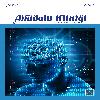Otizm Spektrum Bozuklukları Olan Bir Türk Popülasyonda Erkek Genital Anomalileri Bulguları
Findings of Male Genital Anomalies in a Turkish Population with Autism Spectrum Disorders
___
- 1. Association AP. Diagnostic and statistical manual of mental disorders (DSM-5). American Psychiatric Pub. 2013.
- 2. Monteiro SA, Spinks-Franklin A, Treadwell-Deering D, Berry L, Sellers-Vinson S, Smith E, et al. Prevalence of autism spectrum disorder in children referred for diagnostic autism evaluation. Clin Pediatr. 2015;54(14):1322–7.
- 3. Rosti RO, Sadek AA, Vaux KK, Gleeson JG. The genetic landscape of autism spectrum disorders. Dev Med Child Neurol. 2014;56(1):12–8.
- 4. Vijayakumar NT, Judy M. Autism spectrum disorders: Integration of the genome, transcriptome and the environment. J Neurol Sci. 2016;364:167–76.
- 5. Modabbernia A, Velthorst E, Reichenberg A. Environmental risk factors for autism: an evidence-based review of systematic reviews and meta-analyses. Mol Autism. 2017;8(1):13.
- 6. Ornoy A, Weinstein-Fudim L, Ergaz Z. Genetic syndromes, maternal diseases and antenatal factors associated with autism spectrum disorders (ASD). Front Neurosci. 2016;10:316.
- 7. Arndt TL, Stodgell CJ, Rodier PM. The teratology of autism. Int J Dev Neurosci. 2005;23(2–3):189–99.
- 8. Lombardo MV, Auyeung B, Pramparo T, Quartier A, Courraud J, Holt RJ, et al. Sex-specific impact of prenatal androgens on intrinsic functional connectivity between social brain default mode subsystems. BioRxiv. 2018:253310.
- 9. Chakrabarti B, Dudbridge F, Kent L, Wheelwright S, HillCawthorne G, Allison C, et al. Genes related to sex steroids, neural growth, and social–emotional behavior are associated with autistic traits, empathy, and Asperger syndrome. Autism Res. 2009;2(3):157–77.
- 10. Schmidtova E, Kelemenova S, Celec P, Ficek A, Ostatnikova D. Polymorphisms in genes involved in testosterone metabolism in Slovak autistic boys. The Endocrinol. 2010;20(5):245–9.
- 11. Zettergren A, Jonsson L, Johansson D, Melke J, Lundström S, Anckarsäter H, et al. Associations between polymorphisms in sex steroid related genes and autistic-like traits. Psychoneuroendocrinol. 2013;38(11):2575–84.
- 12. Miodovnik A, Diplas AI, Chen J, Zhu C, Engel SM, Wolff MS. Polymorphisms in the maternal sex steroid pathway are associated with behavior problems in male offspring. Psychiatr Genet. 2012;22(3):115.
- 13. Toppari J, Virtanen HE, Main KM, Skakkebaek NE. Cryptorchidism and hypospadias as a sign of testicular dysgenesis syndrome (TDS): environmental connection. Birth Defects Res A Clin Mol Teratol. 2010;88(10):910– 9.
- 14. Skakkebaek NE, Rajpert-De Meyts E, Buck Louis GM, Toppari J, Andersson AM, Eisenberg ML, et al. Male reproductive disorders and fertility trends: influences of environment and genetic susceptibility. Physiol Rev. 2015;96(1):55–97.
- 15. Timonen‐Soivio L, Vanhala R, Malm H, Leivonen S, Jokiranta E, Hinkka-Yli-Salomäki S, et al. The association between congenital anomalies and autism spectrum disorders in a Finnish national birth cohort. Dev Med Child Neurol. 2015;57(1):75–80.
- 16. Schieve LA, Shapira SK. Invited Commentary: male reproductive system congenital malformations and the risk of autism spectrum disorder. Am J Epidemiol 2018;187(4):664–7.
- 17. Chen J, Sørensen HT, Miao M, Liang H, Ehrenstein V, Wang Z, et al. Cryptorchidism and increased risk of neurodevelopmental disorders. J Psychiatr Res. 2018;96:153–61.
- 18. Sijstermans K, Hack W, Meijer R, van der Voort-Doedens L. The frequency of undescended testis from birth to adulthood: a review. Int J Androl. 2008;31(1):1–11.
- 19. Chan E, Wayne C, Nasr A. Ideal timing of orchiopexy: a systematic review. Pediatr Surg Int. 2014;30(1):87–97.
- 20. Springer A, Van Den Heijkant M, Baumann S. Worldwide prevalence of hypospadias. J Pediatr Urol. 2016;12(3):152.e1–e7.
- 21. Boisen K, Chellakooty M, Schmidt I, Kai C, Damgaard I, Suomi AM, et al. Hypospadias in a cohort of 1072 Danish newborn boys: prevalence and relationship to placental weight, anthropometrical measurements at birth, and reproductive hormone levels at three months of age. J Clin Endocrinol Metab. 2005;90(7):4041–6.
- 22. Kohane IS, McMurry A, Weber G, MacFadden D, Rappaport L, Kunkel L, et al. The co-morbidity burden of children and young adults with autism spectrum disorders. PloS one. 2012;7(4):e33224.
- 23. Butwicka A, Lichtenstein P, Landén M, Nordenvall AS, Nordenström A, Nordenskjöld A, et al. Hypospadias and increased risk for neurodevelopmental disorders. J Child Psychol Psychiatry. 2015;56(2):155–61.
- 24. Rzhetsky A, Bagley SC, Wang K, Lyttle CS, Cook Jr EH, Altman RB, et al. Environmental and state-level regulatory factors affect the incidence of autism and intellectual disability. PLoS Comput Biol. 2014;10(3):e1003518.
- 25. Cortada X, Kousseff BG. Cryptorchidism in mental retardation. J Urol. 1984;131(4):674–6.
- 26. Rundle J, Primrose D, Carachi R. Cryptorchism in cerebral palsy. Brit J Urol. 1982;54(2):170–1.
- 27. Depue RH. Cryptorchidism, an epidemiologic study with emphasis on the relationship to central nervous system dysfunction. Teratol. 1988;37(4):301–5.
- 28. Liederman J, Flannery KA, Curley J. Cryptorchidism (undescended testes): a common congenital malformation associated with neurobehavioral abnormalities. Child Neuropsychol. 1997;3(2):134–46.
- ISSN: 2149-5254
- Yayın Aralığı: Yılda 3 Sayı
- Başlangıç: 1933
- Yayıncı: Hayat Sağlık ve Sosyal Hizmetler Vakfı
Serkan Aksu, Adnan Kurt, Ahmet Zihni Soyata, Kardelen Türkü Saçar, Semih Taşdelen, Sacit Karamürsel
Bilateral Cochlear Otosclerosis; Clinic and Radiologic Findings
Otizm Spektrum Bozuklukları Olan Bir Türk Popülasyonda Erkek Genital Anomalileri Bulguları
Hesna Gül, Yetiş Işıldar, Sahin Bodur, Miray Çetinkaya, Candan Taşkıran
Fatih Doğan, Seyfullah Oktay Arslan, Fidan Pesen Özdoğan, Kemal Gökhan Ulusoy, Enis Macit, Saliha Ayşenur Cam, Fatma Uysal
Emre Ebem, Mahmut Sami Tutar, Munise Yıldız, Ahmet Canıtez, Özlem Kara, Betül Kozanhan
Tıp Öğrencilerinin Üreme Sağlığı ve Aile Planlaması Konusundaki Bilgi Düzeyinin Değerlendirilmesi
Hatice İkiışık, Alpaslan Arı, Hatice Feyza Başıbüyük, Kübra Bıyık, Ali Emre Erdem, Işıl Maral
Göğüs Cerrahisi Sonrası Erken Dönemde Uygulanan Fizyoterapinin Hemodinamik Etkileri
Esra Pehlivan, Arif Balcı, Feride Elçin Cagay, Z. Nilgün Ulukol
Hat zeyil iltihaplarına ne zaman müdahale edilmelidir?
Bir Tıp Fakültesi Hastanesinin Çocuk Acil Servisine Başvuran Hastaların Özellikleri
Ramazan Cahit TEMİZKAN, Nursel BÜYÜK, Önder KILIÇASLAN, Handan ANKARALI, Kenan KOCABAY
Yüksel Balcı, Anıl Özgür, Sermin Tok Umay, Kaan Esen, Semra Erdoğan, Gülhan Temel
